Coupling of Bio-Reactors to Increase Maximum Sustainable Yield
Abstract
1. Introduction
2. Methods
2.1. The Minimal Model of the Chemostat and the MSY
2.2. The Model of a System of Two Coupled Bioreactors with Fast Substrate and Product Exchanges
2.2.1. Presentation of the Complete Model
2.2.2. Reduction of the Complete Model
2.2.3. Existence and Positivity of Solutions of the Aggregated Model
2.2.4. Equilibrium Solutions
- .
2.2.5. Global Stability
3. Results and Discussion
3.1. Maximum Sustainable Yield for the Chemostat
3.2. Maximum Sustainable Yield for the System of Two Coupled Bioreactors
3.3. Application to the Gradostat
3.4. Application to Fish Farming
4. Concluding Remarks and Perspectives
Author Contributions
Funding
Institutional Review Board Statement
Informed Consent Statement
Data Availability Statement
Conflicts of Interest
Appendix A
References
- Iwasa, Y.; Levin, S.; Andreasen, V. Aggregation in model ecosystems II. Approximate aggregation. Math. Med. Biol. 1989, 6, 1–23. [Google Scholar] [CrossRef]
- Auger, P.; Poggiale, J.-C.; Sanchez, E. A review on spatial aggregation methods involving several time scales. Ecol. Comp. 2012, 10, 12–25. [Google Scholar] [CrossRef]
- Auger, P.; Bravo de la Parra, R.; Poggiale, J.C.; Sánchez, E.; Nguyen Huu, T. Aggregation of variables and applications to population dynamics. In Structured Population Models in Biology and Epidemiology; Lecture Notes in Mathematics; Magal, P., Ruan, S., Eds.; Springer: Berlin/Heidelberg, Germany, 2008; Volume 1936, pp. 209–263. [Google Scholar]
- Auger, P.; Bravo de la Parra, R.; Poggiale, J.C.; Sánchez, E.; Sanz, E. Aggregation methods in dynamical systems and applications in population and community dynamics. Phys. Life Rev. 2008, 5, 79–105. [Google Scholar] [CrossRef][Green Version]
- Marvá, M.; Bravo de la Parra, R.; Poggiale, J.C. Reduction of slow-fast asymptotically autonomous systems with applications to gradostat models. Ecol. Complex. 2013, 14, 75–84. [Google Scholar] [CrossRef]
- Fenichel, N. Persistence and smoothness of invariant manifolds for flows. Indiana Univ. Math. J. 1971, 21, 193–226. [Google Scholar] [CrossRef]
- Marvá, M.; Poggiale, J.-C.; Bravo de la Parra, R. Reduction of slow-fast periodic systems: Fast migrations in a predator–prey community. Math. Model. Methods Appl. Sci. 2012, 22, 1250025. [Google Scholar] [CrossRef]
- Schaefer, M.B. Some aspects of the dynamics of populations important to the management of commercial marine fisheries. Bull. Inter-Am. Trop. Tuna Comm. 1954, 1, 25–56. [Google Scholar]
- Clark, C.W. Mathematical Bioeconomis. In The Optimal Management of Renewable Resources, 2nd ed.; John Wiley & Sons, Inc.: New York, NY, USA, 1990. [Google Scholar]
- Murray, J.D. Mathematical Biology I. An Introduction; Springer: New York, NY, USA, 2002. [Google Scholar]
- Legovic, T.; Gecek, S. Impact of maximum sustainable yield on independent populations. Ecol. Model. 2010, 221, 2108–2111. [Google Scholar] [CrossRef]
- Ghosh, B.; Kar, T. Maximum sustainable yield and species extinction in a prey–predator system: Some new results. J. Biol. Phys. 2013, 39, 453–467. [Google Scholar] [CrossRef] [PubMed][Green Version]
- Kar, T.K.; Ghosh, B. Impacts of maximum sustainable yield policy to prey–predator systems. Ecol. Model. 2013, 250, 134–142. [Google Scholar] [CrossRef]
- Legovic, T.; Klanjscek, J.; Gecek, S. Maximum sustainable yields and species extinction in ecosystems. Ecol. Model. 2011, 221, 1569–1574. [Google Scholar] [CrossRef]
- Legovic, T.; Gecek, S. Impact of maximum sustainable yield on mutualistic communities. Ecol. Model. 2012, 230, 63–72. [Google Scholar] [CrossRef]
- Harmand, J.; Lobry, C.; Rapaport, A.; Sari, T. The Chemostat: Mathematical Theory of Microorganisms Culture; ISTE Ltd. and John Wiley: Hoboken, NJ, USA, 2017. [Google Scholar]
- Smith, H.L.; Waltman, O. The Theory of the Chemostat: Dynamics of Microbial Competition; Cambridge University Press: Cambridge, UK, 1995. [Google Scholar]
- Dali-Youcef, M.; Rapaport, A.; Sari, T. Study of performance criteria of serial configuration of two chemostats. Math. Biosci. Eng. 2021, 17, 6278–6309. [Google Scholar] [CrossRef] [PubMed]
- Caraballo, T.; Lopez-de-laCruz, J.; Rapaport, A. Study of the dynamics of two chemostats connected by Fickian diffusion with bounded random fluctuations. Stoch. Dyn. 2021, 2240002. [Google Scholar] [CrossRef]
- Pavlou, S. Microbial competition in bioreactors. CICEQ 2006, 12, 71–81. [Google Scholar] [CrossRef]
- Doran, P. Bioprocess Engineering Principles, 2nd ed.; Elsevier: Heidelberg, Germany, 2013. [Google Scholar]
- Tikhonov, A.N. Systems of differential equations containing small parameters in the derivatives. Mat. Sb. 1952, 70, 575–586. [Google Scholar]
- Burton, T.A. Volterra Integral and Differential Equations, 2nd ed.Mathematics in Sciences & Engineering; Elsevier: Amsterdam, The Netherlands, 2005. [Google Scholar]
- Campbell, D. United Nations Development Programme Food and Agriculture Organization of the United Nations Nigerian Institute for Oceanography and Marine Research Project Raf/82/009: A Review of the Biology and Culture of Tilapia guineensis. 1987. Available online: http://www.fao.org/3/ac165e/ac165e00.htm (accessed on 11 January 2021).
- CIPA Report. Available online: https://www.poisson-aquaculture.fr (accessed on 9 January 2021).
- Johnson, M.P. Farm Production Diversity in Aquaculture Has Been Overlooked as a Contributor to Sustainability. Front. Sustain. Food Syst. 2021, 5, 1–8. [Google Scholar] [CrossRef]
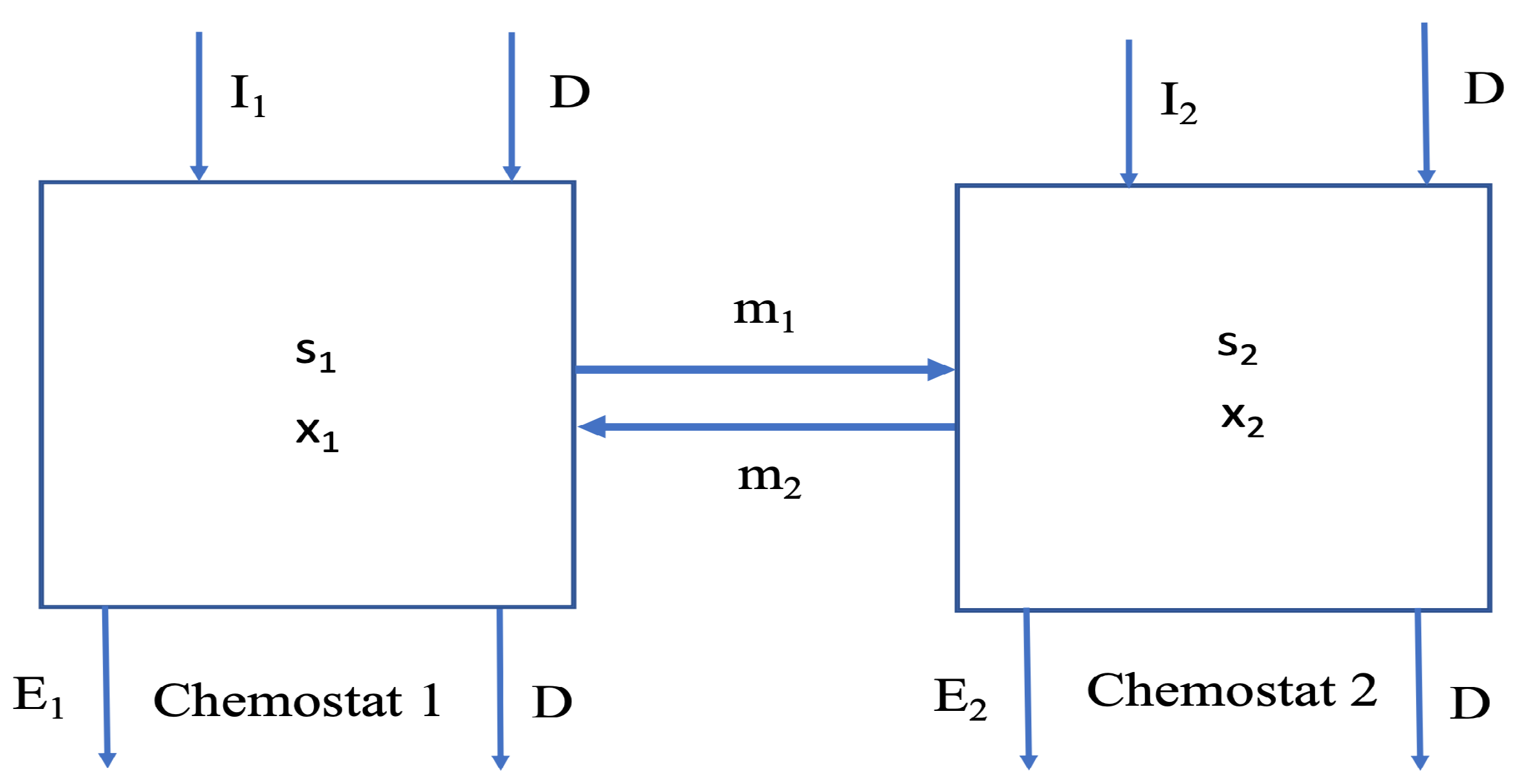

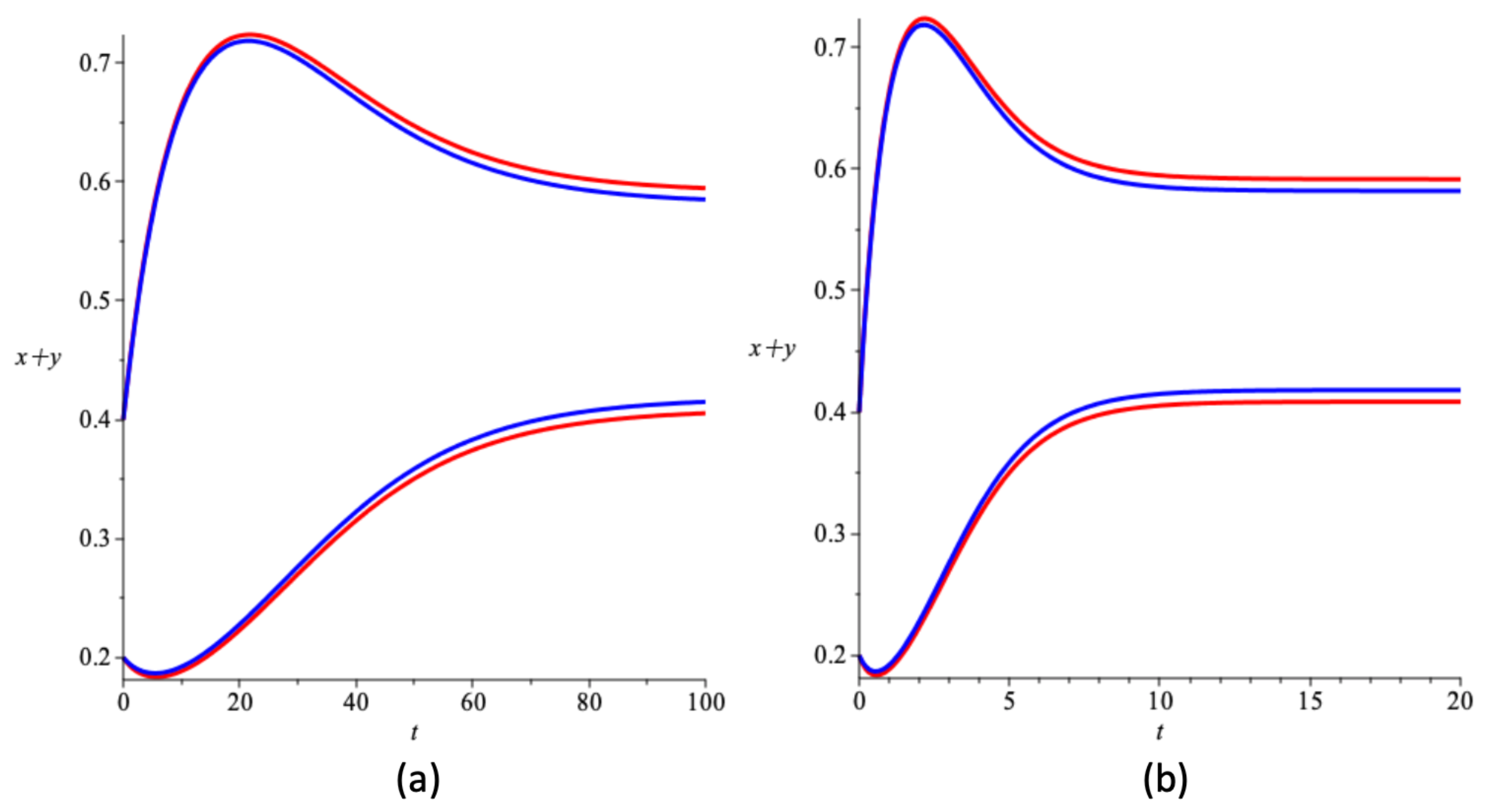


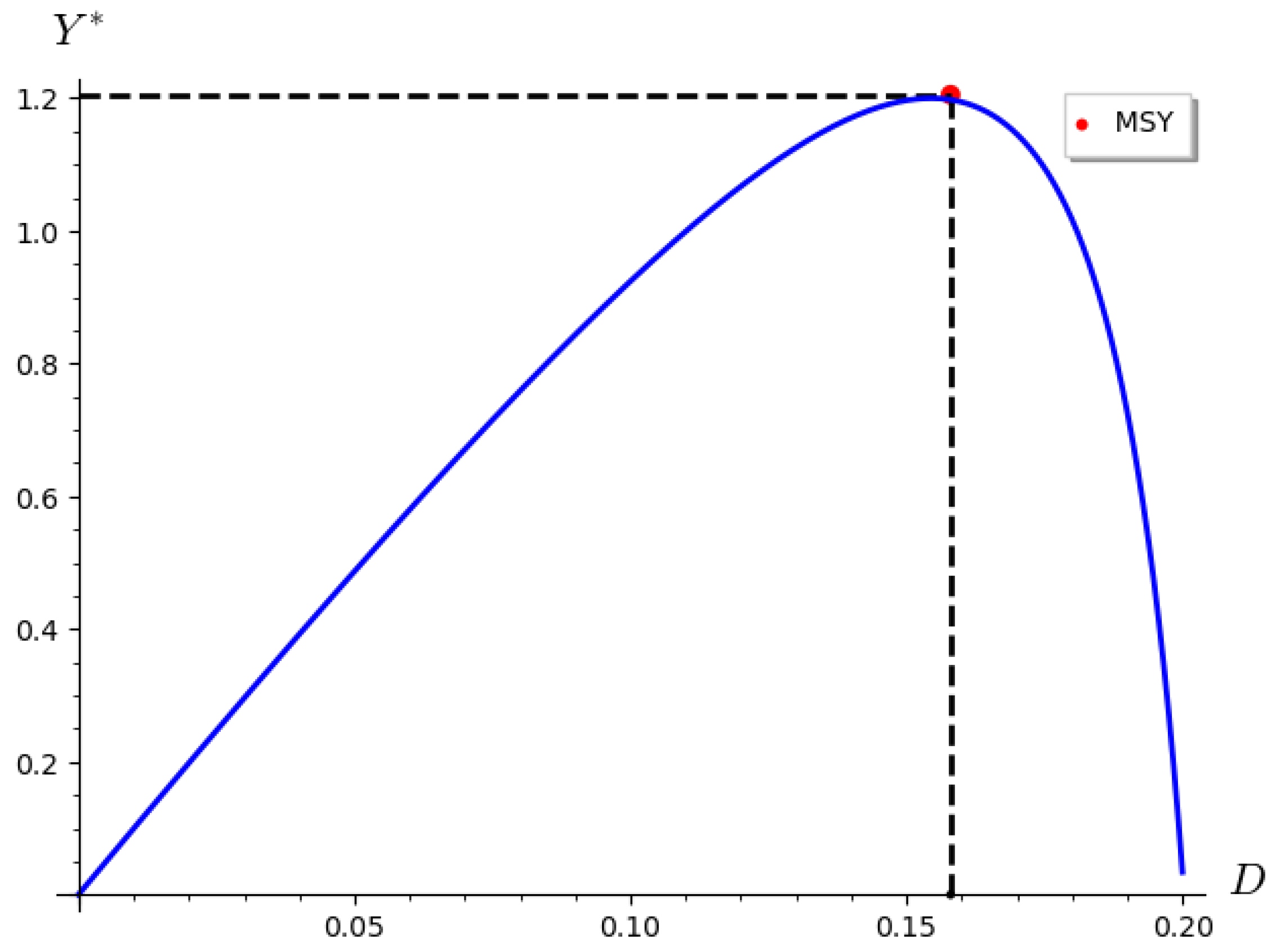

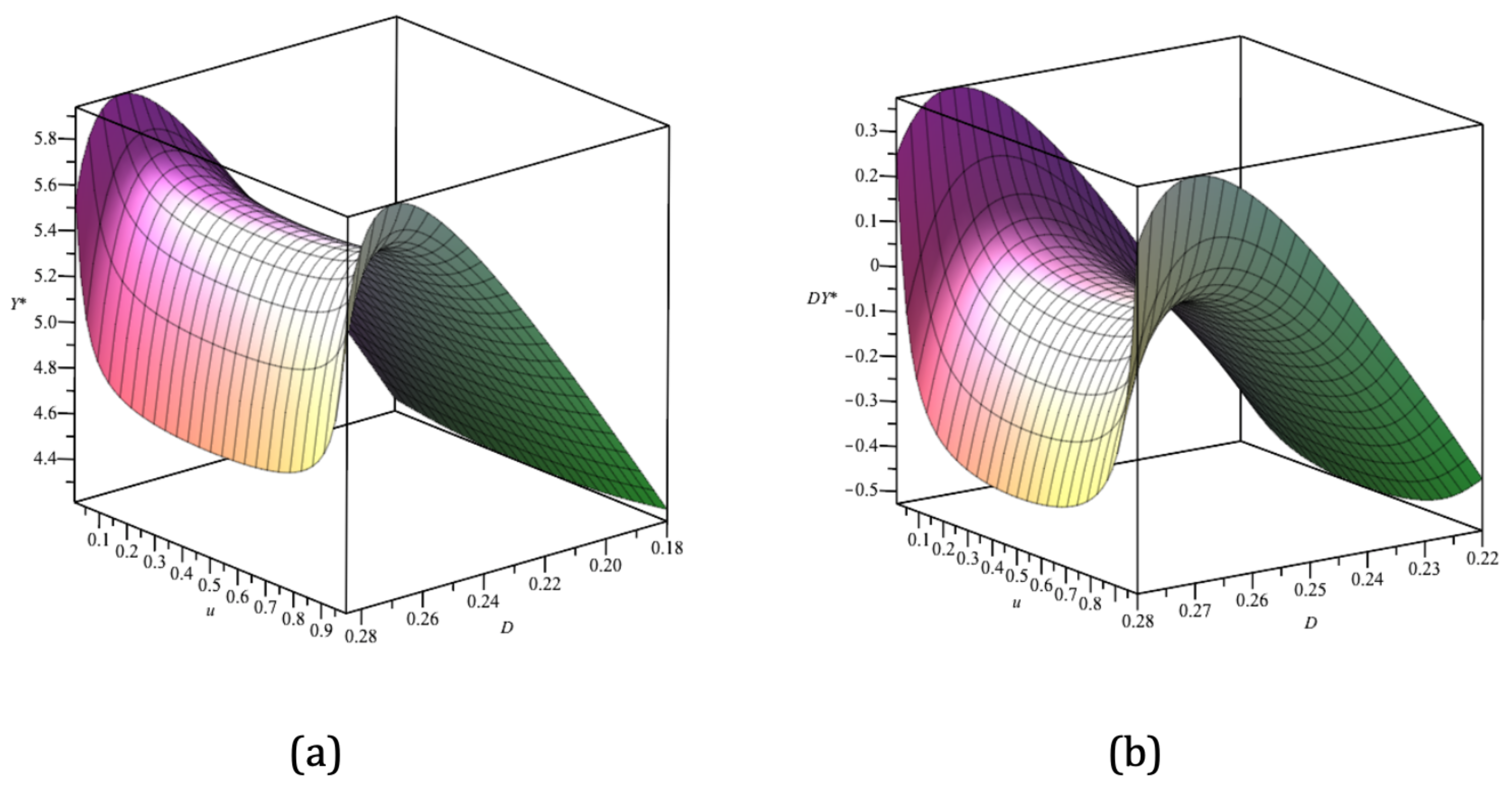
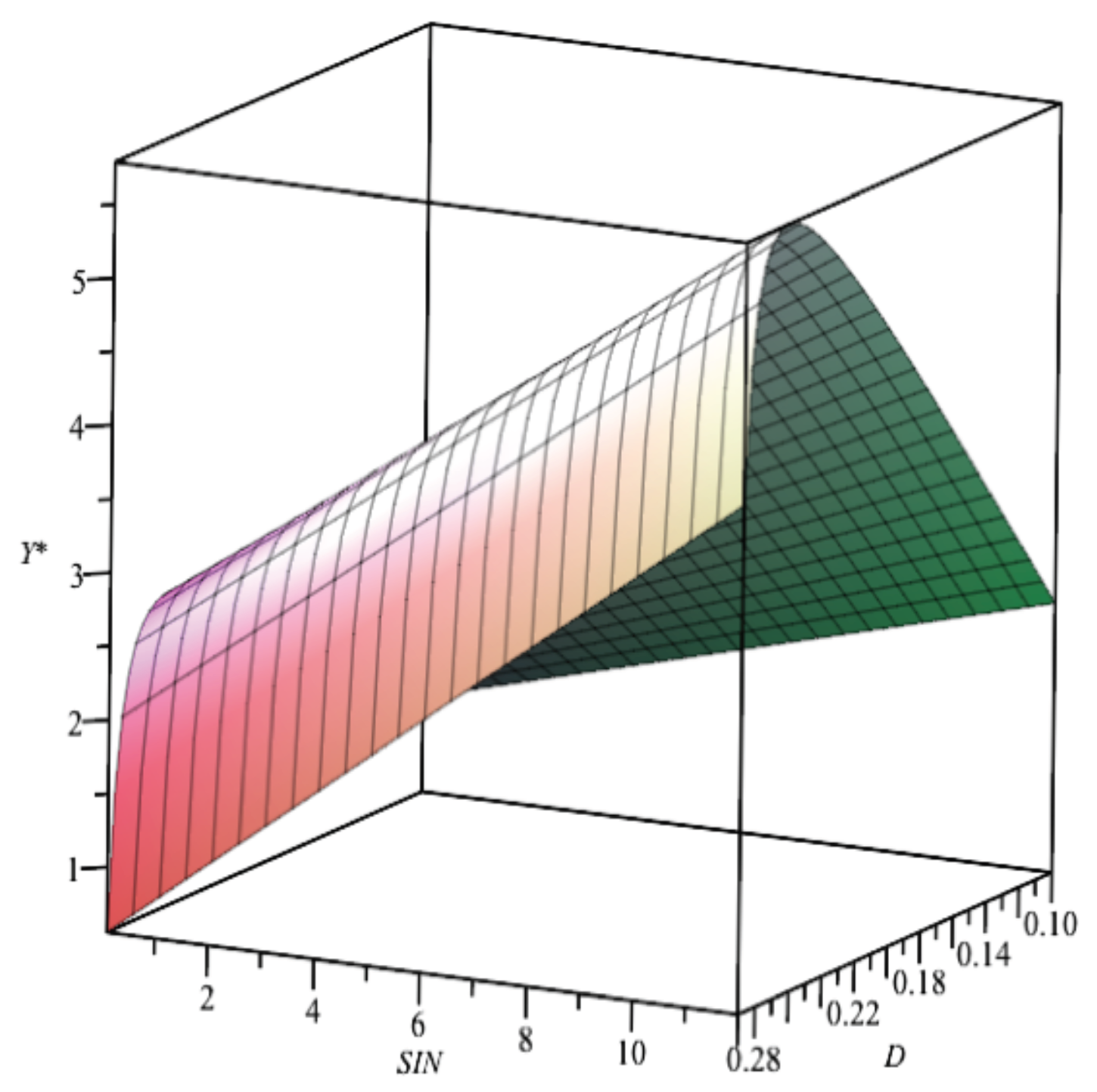

| u | ||||
|---|---|---|---|---|
| 0.01 | 0.70 | 0.39 | 0.31 | 80.1% |
| 0.05 | 0.65 | 0.39 | 0.26 | 68.1% |
| 0.10 | 0.59 | 0.39 | 0.21 | 54.7% |
| 0.15 | 0.54 | 0.39 | 0.16 | 41.1% |
| 0.20 | 0.50 | 0.39 | 0.12 | 30.1% |
| 0.25 | 0.47 | 0.39 | 0.08 | 20.9% |
| 0.30 | 0.44 | 0.39 | 0.05 | 13.4% |
| 0.35 | 0.42 | 0.39 | 0.03 | 7.5% |
| 0.40 | 0.40 | 0.39 | 0.013 | 3.3% |
| 0.45 | 0.39 | 0.39 | 0.003 | 0.8% |
| 0.50 | 0.38 | 0.39 | negative | undefined |
Publisher’s Note: MDPI stays neutral with regard to jurisdictional claims in published maps and institutional affiliations. |
© 2022 by the authors. Licensee MDPI, Basel, Switzerland. This article is an open access article distributed under the terms and conditions of the Creative Commons Attribution (CC BY) license (https://creativecommons.org/licenses/by/4.0/).
Share and Cite
Auger, P.; Moussaoui, A. Coupling of Bio-Reactors to Increase Maximum Sustainable Yield. Mathematics 2022, 10, 555. https://doi.org/10.3390/math10040555
Auger P, Moussaoui A. Coupling of Bio-Reactors to Increase Maximum Sustainable Yield. Mathematics. 2022; 10(4):555. https://doi.org/10.3390/math10040555
Chicago/Turabian StyleAuger, Pierre, and Ali Moussaoui. 2022. "Coupling of Bio-Reactors to Increase Maximum Sustainable Yield" Mathematics 10, no. 4: 555. https://doi.org/10.3390/math10040555
APA StyleAuger, P., & Moussaoui, A. (2022). Coupling of Bio-Reactors to Increase Maximum Sustainable Yield. Mathematics, 10(4), 555. https://doi.org/10.3390/math10040555







